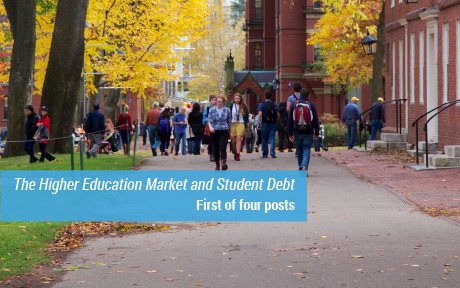Are Student Loan Defaults Cyclical? It Depends

This post is the second in a two-part series on student loan default behavior. In the first post , we studied how educational characteristics (school type and selectivity, graduation, and major) and family background relate to the incidence of student loan default. In this post, we investigate whether default behavior has varied across cohorts of borrowers as the labor market evolved over time. Specifically, does the ability of student loan holders to repay their loans vary with the state of the labor market? Does the type of education these students received make any difference to this relationship?
Who Is More Likely to Default on Student Loans?

This post seeks to understand how educational characteristics (school type and selectivity, graduation status, major) and family background relate to the incidence of student loan default. Student indebtedness has grown substantially, increasing by 170 percent between 2006 and 2016. In addition, the fraction of students who default on those loans has grown considerably. Of students who left college in 2010 and 2011, 28 percent defaulted on their student loans within five years, compared with 19 percent of those who left school in 2005 and 2006. Since defaulting on student loans can have serious consequences for credit scores and, by extension, the ability to purchase a home and take out other loans, it’s critical to understand how college and family characteristics correspond to default rates.
Who Falters at Student Loan Payback Time?
This is the final post in a four-part series examining the evolution of enrollment, student loans, graduation and default in the higher education market over the course of the past fifteen years.
The Changing Role of Community‑College and For‑Profit‑College Borrowers in the Student Loan Market
In the first post in this series, we characterized the rapid transformation of the higher education market over the 2000-2015 period, a transformation that was led by explosive growth of the for-profit sector of higher education.
The Changing Higher Education Landscape
Just Released: Lifting the Veil—For‑Profits in the Higher Education Landscape
Higher education is pivotal in our society—yet, its landscape is changing. Over the past decade, the private, for-profit sector of higher education has seen unprecedented growth, and its market share is at an all-time high.
















 RSS Feed
RSS Feed Follow Liberty Street Economics
Follow Liberty Street Economics